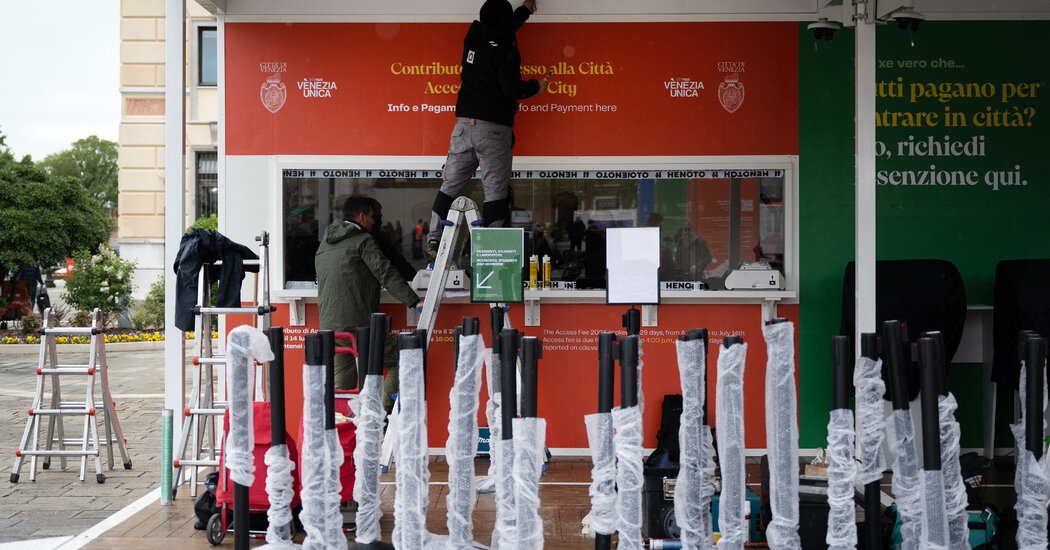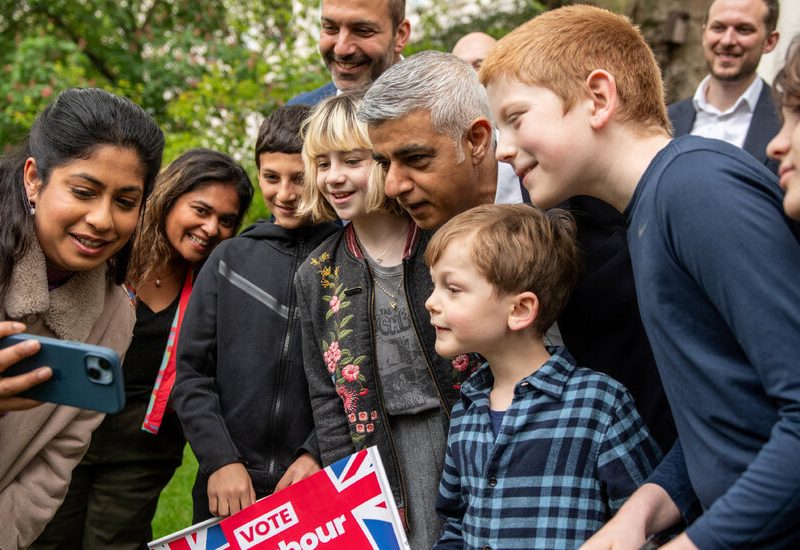After years of debate, Venice on Thursday will begin charging day visitors five euros to visit its fragile historic center on peak days, making it the first city in the world to adopt such a measure to counter overtourism.
Critics question whether a nominal fee will put people off from visiting one of the world’s most desired destinations. But officials hope that it might encourage some to rethink their plans and decide to come on weekdays or in the off-season. That might help mitigate the impact of the estimated 20 million visitors who descended last year on the city’s beleaguered residents, who number fewer than 50,000, according to municipal statistics. About half of those visitors came only for the day, city officials said. Overnight guests are exempt from the fee.
The spirit of the initiative, city officials have said, is to make people aware of the uniqueness — and fragility — of Venice. Overtourism is creating an economy solely based on tourism that risks killing the city by pushing its dwindling residents out, said Nicola Camatti, an economics professor and expert in tourism at Ca’ Foscari University of Venice.
When will Venice start charging?
The fee goes into effect on Thursday, a holiday in Italy. For 2024, city officials have singled out 29 peak days when single-day travelers in Venice between 8:30 a.m. and 4 p.m. have to pay. The days run until mid-July and are mostly on national holidays and weekends. The access-fee website provides a list of the dates.
Who must pay?
While just about everyone visiting the city has to register to obtain a QR code, not all visitors have to pay the fee. Overnight guests at registered accommodations like hotels or Airbnbs are exempt, because they already pay a daily tourist tax, as are people who study or work in Venice and those visiting relatives. There are other exemptions as well.
Residents of Venice, those born there and minors under 14 are among those who do not have to register. But they must have documents that prove their status.
It is possible that different fees will apply next year on a sliding scale that will depend on how many people city officials expect on any one day. City officials said the fees could be as high as 10 euros per day.
How will the system work?
Before coming to Venice on peak days, visitors should use the website to register and get a QR code.
The code will be scanned at points where visitors enter, like the train station, the city parking lot, the airport and the sprawling waterfront along the San Marco basin where boats dock. The access points will have one line for tourists and another for residents and what officials call city users, who are coming into Venice for reasons other than sightseeing.
At least for now, those who do not register ahead of time can do so at some access points or on their cellphones, officials said. Assistants will be available.
Initially, the controls will be “very soft,” said Michele Zuin, the municipal councilor responsible for the city’s budget.
Speaking to reporters at the foreign press association in Rome this month, Mayor Luigi Brugnaro said the fee was not about cashing in on tourists. “The costs of the operation are higher that what we’re going to make,” he said.
Why is Venice doing this?
City officials hope to relieve some of the stress that tourists put on the city by encouraging them to come on less busy days. They also say that by knowing ahead of time how many visitors to expect, the city can better deploy services.
“We want to better manage the numbers of tourists and disincentivize mass tourism” that makes it difficult for residents and visitors to “live in this city,” Mr. Zuin said this month.
To track the flow of visitors, the city already monitors them via phone location data and surveillance cameras, a system some critics have likened to Big Brother.
Venice has also fallen under the scrutiny of the United Nations’ culture agency, UNESCO, whose experts are concerned that not enough is being done to protect the city. Last year, Venice risked being added to UNESCO’s list of Endangered World Heritage Sites after experts at the agency listed mass tourism, along with climate change and development, as a major threat to its future. It urged City Hall to take steps to ameliorate the damage.
The municipal council approved the access fee just days before UNESCO was to vote on its status, and Venice stayed off the “in danger” list. But UNESCO officials said in a statement that “further progress still needs to be made” to conserve Venice.
Critics of the access fee note that officials have not capped the number of visitors, and they say that the nominal fee is hardly a deterrent. Just Friday, city officials said that about 80,000 visitors swelled the city’s narrow calli, as streets are known, and the gardens of the 2024 Venice Biennale, still the world’s principal place to discover new art.
How else is Venice trying to restrict visitors?
Venice also has taken other steps it hopes will reduce what city officials call “mordi e fuggi,” or “eat and flee,” tourism, referring to those who seek the city’s greatest hits — the Rialto Bridge and St. Mark’s Square — and who bring packed lunches and dump their garbage, contributing little to the local economy.
After years of heated debate and protests by vocal Venetians, the city banned cruise ships from its inner canals in 2021, though Mr. Camatti, the tourism expert, said the ban on the ships had not reduced the number of day visitors.
This year, the city imposed a limit of 25 people per tour group and also banned the use of megaphones.



